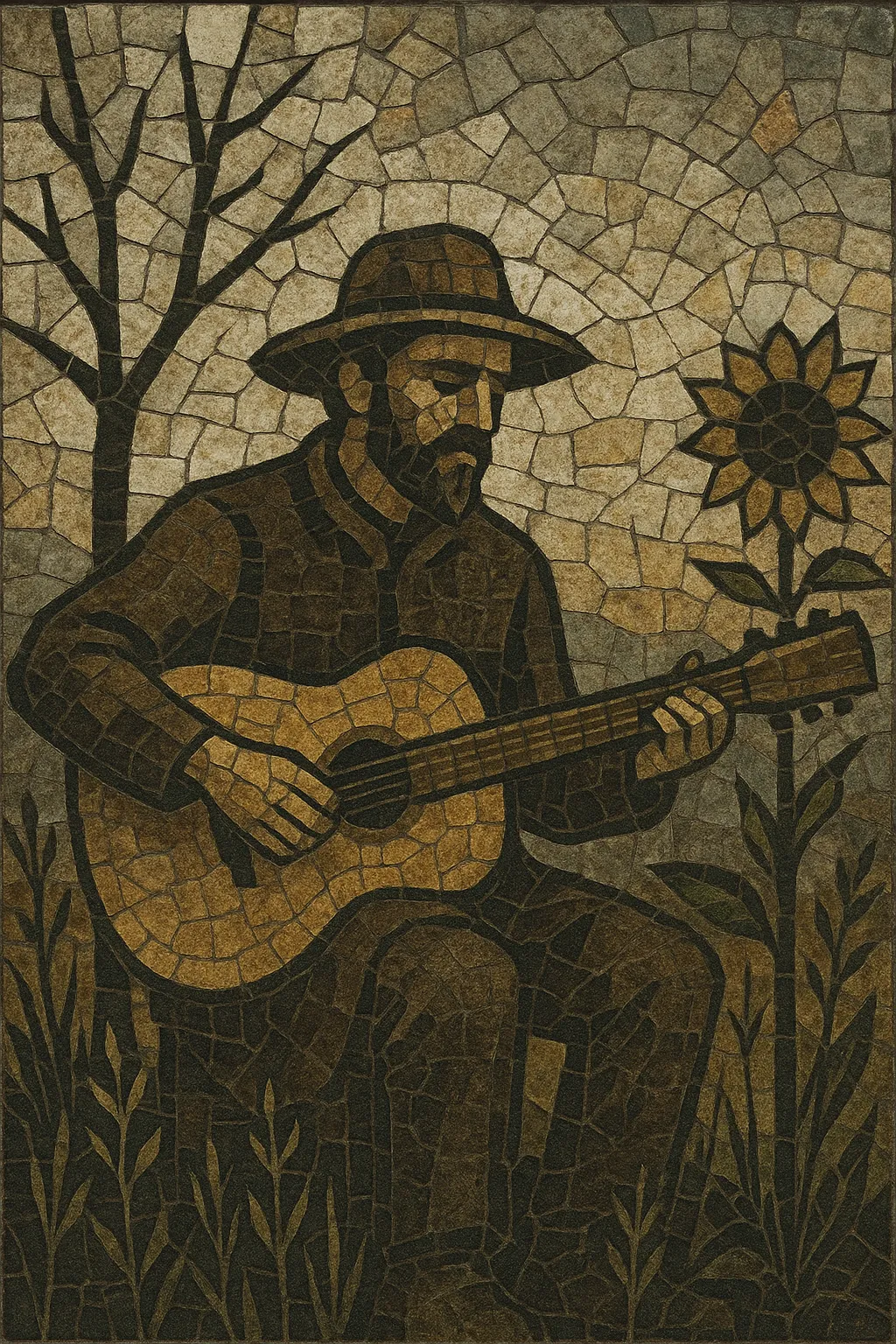Neofolk is a post-industrial offshoot that blends traditional acoustic folk instrumentation with the austere atmospheres, ritual rhythms, and poetic sensibilities of the industrial and post-punk underground. It often features intimate acoustic guitars, baritone or chant-like vocals, martial or processional percussion, drones, and sparse strings or harmonium.
Thematically, neofolk is preoccupied with memory, myth, and modernity—drawing on pagan or pre-Christian motifs, Romantic poetry, war-time remembrance, esoteric philosophy, and nature mysticism. The sound tends to be minimal and deliberate, favoring modal harmony and restrained dynamics that sharpen lyrical focus and mood. While sometimes called “apocalyptic folk,” the label describes the tone rather than a single ideology, as artists span a wide range of personal and political stances.
Neofolk emerged in the early–mid 1980s in the United Kingdom when figures from the post-punk and industrial scenes began shifting toward austere acoustic songwriting. Groups like Death in June, Current 93, and Sol Invictus pioneered a sound that retained the severity and conceptual focus of industrial culture while embracing folk instruments, modal harmony, and literary or esoteric lyricism. The term “apocalyptic folk” circulated among fanzines and record shops to denote the mood—somber, reflective, and often historical or mythic.
Through the 1990s, the genre expanded across continental Europe. German acts such as Forseti and Orplid, Nordic groups like Tenhi and Of the Wand & the Moon, and UK-associated projects (e.g., Nature and Organisation) diversified the palette: martial snare patterns, drones and field recordings, and neoclassical or medieval colors became common. Distribution networks like World Serpent and labels including Eis & Licht and Cold Meat Industry connected artists and audiences, consolidating neofolk as a recognizable current within the broader post-industrial ecosystem.
In the 2000s, neofolk both diversified and drew scrutiny. Some artists adopted more overtly martial rhythms and ceremonial timbres; others leaned into ambient folk intimacy. Visual aesthetics—runes, uniforms, and interwar imagery—prompted ongoing debates about symbolism and politics. Meanwhile, acts like Rome helped carry the style to new audiences. After the collapse of key distributors, artists increasingly moved to independent labels and later to digital platforms.
Neofolk persisted through cross-genre exchange: black metal and post-rock scenes borrowed acoustic interludes and ritual atmospheres, while neofolk acts incorporated subtle electronics, tape patina, or chamber textures. Streaming-era curation and reissues introduced the canon to new listeners. Today, the genre remains a niche but durable form focused on lyrical gravitas, spare arrangements, and a contemplative approach to history and myth.
Start with a steel- or nylon-string acoustic guitar recorded closely and dry to emphasize intimacy. Add low, ceremonial percussion (snare with brushes or mallets, floor toms, frame drum, or bodhrán) in simple, processional patterns. For color, layer harmonium, violin/viola, cello, glockenspiel, accordion, or subtle brass. Use quiet drones, field recordings (wind, church bells, birds), or tape hiss to create an aged patina without overpowering the acoustic core.
Favor minor modes (Aeolian, Dorian, Phrygian) and modal pedal points. Keep chord progressions spare—two to four chords per song—with voice-leading that sustains tension rather than resolves it completely. Tempos are typically slow to mid (60–100 BPM). Rhythms should feel processional: straight eighth-notes, restrained backbeats, or martial snare rolls. Vocal lines are often baritone and declamatory, hovering around narrow intervals; chants and call-and-response work well.
Write in clear, image-rich language focused on memory, mythology, nature, and existential reflection. Interweave historical fragments (letters, epitaphs, poetry) or esoteric references as motifs rather than direct exposition. Refrains should be stark and memorable. Allow ambiguity; suggest rather than state.
Record dry and close, with light room reverb for depth. Use arrangement economy: introduce one new element per section (e.g., a distant drum in verse two, a harmony violin in the bridge). Pan carefully to leave the vocal centered; let drones sit low and wide. Consider tape saturation or analog emulation to soften transients. Endings often fade into ambience or cadence on an unresolved modal center.
-
• Draft a poem and pick a modal center. 2) Sketch a two-chord ostinato on acoustic guitar. 3) Add a slow martial pattern on snare or floor tom. 4) Layer a quiet drone and one melodic counterline (violin or harmonium). 5) Track vocals intimately; double selectively for emphasis. 6) Mix for restraint—carve space with EQ, minimal compression, and tasteful reverb.


